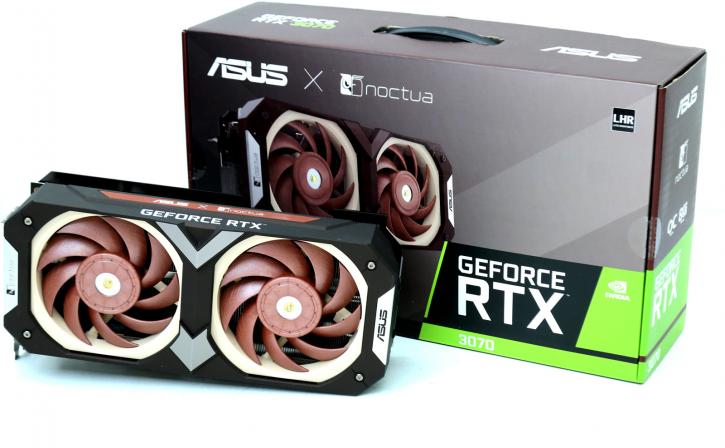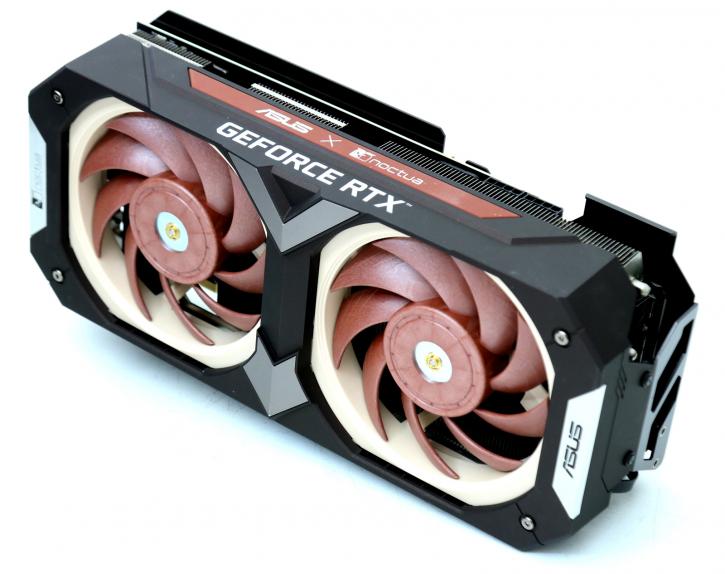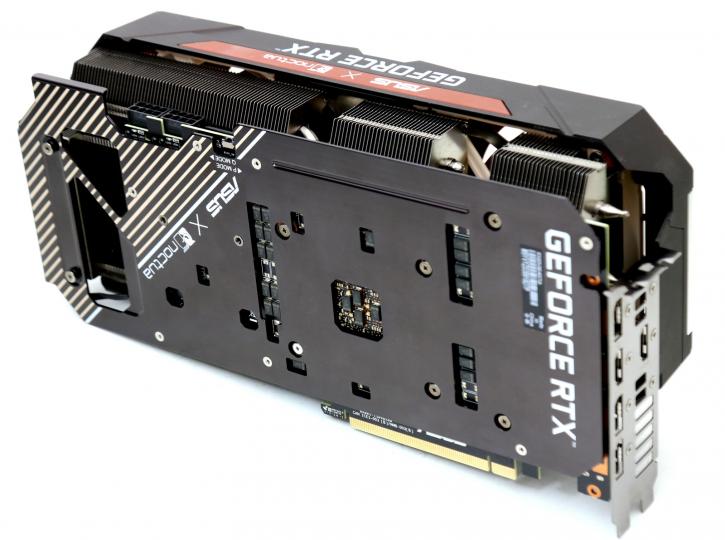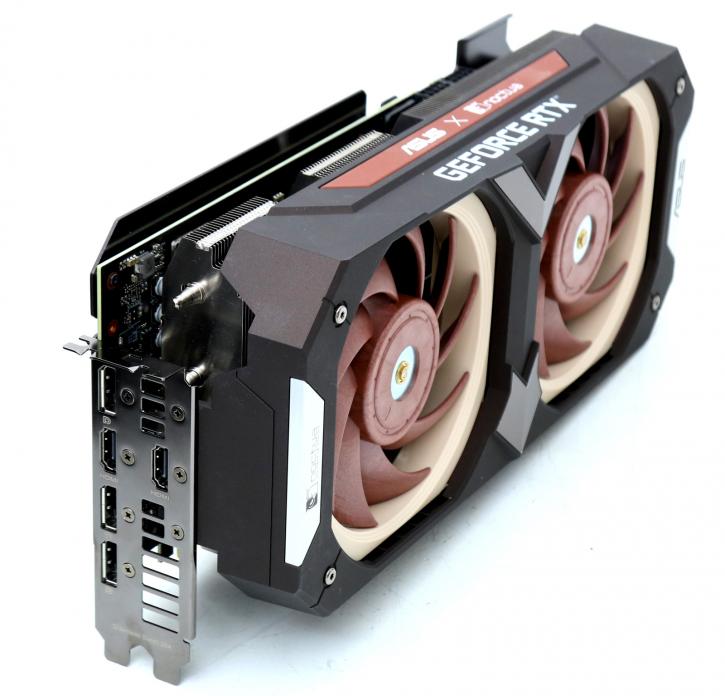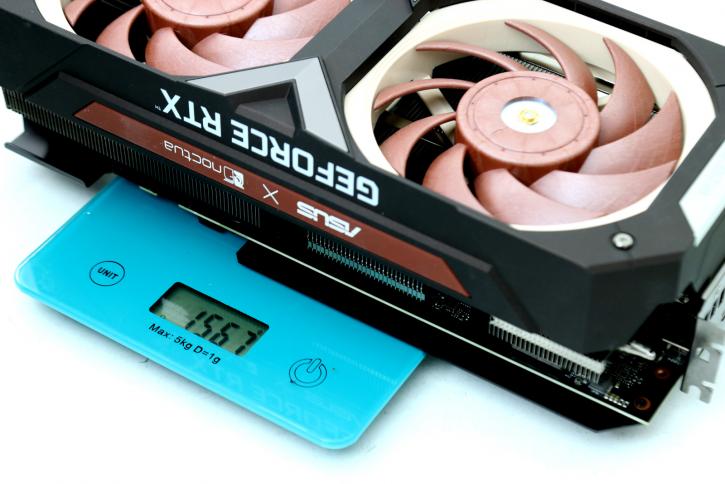Product Photos
Product Photos
The GeForce RTX 3070 is equipped with 8 Gigabytes of GDDR6 memory and operates at a maximum effective data rate of 14 Gbps, which is a data rate that most of us can understand. On the following pages, we'll go over the specifics of the device in greater detail. No a Ti model, but the decision was made based on supply and demand. First and foremost, though, is eye candy.
Brown/beige .. yeah you need to like that. The card comes fitted with two 8-pin power headers, each of which can deliver 150W, for a total of 300W. The PCIe Expres slot has a power rating of 75 watts as well. Overall, the board design has a power rating of 375 Watt. Located slightly to the left of the PCIe PEG power connectors, you'll find a micro-switch that allows you to switch between the default (silent) and OC BIOS modes. While in Overclocking mode, we measured a slightly more aggressive fan RPM mode, as well as active fans when the computer is idle. In terms of game performance, there isn't much of a difference between that OC setting and the default aside from a minimal boost frequency bump.
"Noctua" is immediately apparent upon first glimpse of this card. We do feel the choice made by sticking with the brown color scheme of the Noctua fans, was a good one. We also understand that a lot of people will be disappointed with the final product aesthetics. However, it certainly screams and breathes the Noctua DNA. The cooler extends from the PCB; as you will learn in the teardown, the graphics card PCB itself follows a slightly large form factor that is 31cm in length. The rest of the real estate (and that is a large premise!) used is for cooling, based on a dual-fan cooler. The backplate has plenty of little air gaps, mesh, whatever you want to call it, and is similar to the TUF one. We like that as it allows heat to travel away from the backplate as opposed to trapping it.
Depending on preference, the card can look like crap upwards to fabulous, I guess. The Noctua card comes equipped with a dual-BIOS feature, which is provided by ASUS. Although the "quiet" BIOS is the default setting, switching to the "performance" BIOS will result in a more aggressive fan curve that produces lower temperatures (at the expense of more noise).
The IO panel is also meshed for venting and shows five display connectors, three DisplayPort 1.4, and two HDMI 2.1 connectors that will bring 8K 60 Hz HDR to a single HDMI cable. The card has two fans and uses the traditional power connector design, e.g., 8-pin, but two of them.
Due to the card's overall weight of 1567 Gram, you'll need some proper mounting.

